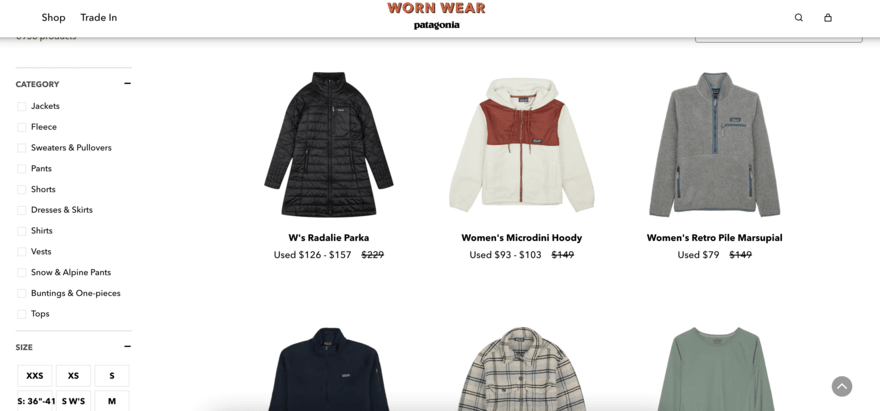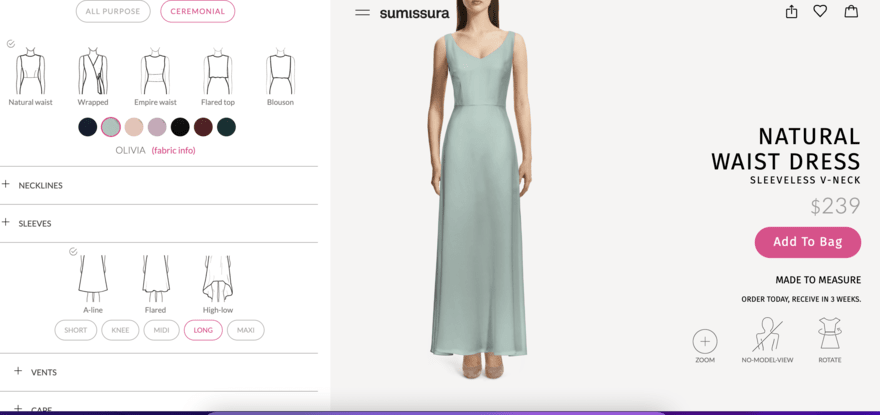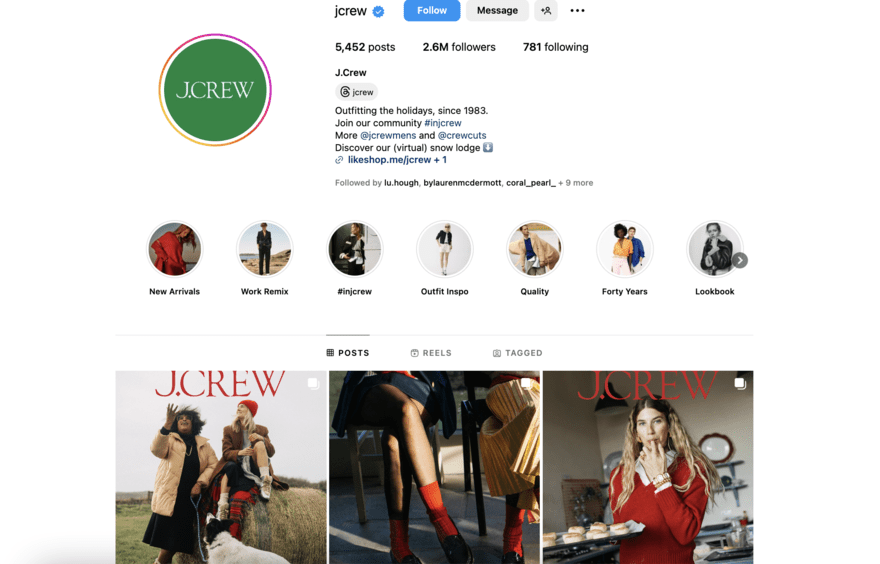Future of Fashion: Ecommerce and Industry Trends for 2024
If you click to purchase a product or service based on our independent recommendations and impartial reviews, we may receive a commission. Learn more
The fashion industry is in an ever-changing orbit and the future of fashion looks startlingly different now than it did just five years ago. Thanks to the rise of online shopping and free ecommerce platforms, it doesn’t look like this transformation is going to slow down anytime soon.
From changes in how we shop (both online and offline) and different demands from customers across areas such as sustainability, identity, and ethics, experts predict that by 2030, the fashion industry could be unrecognizable.
Fashion trends are constantly changing, and we’re not just talking about the style of clothes that prove popular. If you’re planning to start your own online fashion website, or online thrift store, you need to keep on top of the latest trends.
In this article, we’ll explore the future of fashion and what ecommerce and industry trends you can expect for the next few years and beyond.
Future Fashion Trends
- The resale market grew 24% in 2022 alone and is expected to reach a $218 billion market valuation by 2026.
- The fashion resale market is booming for this reason – growing 11 times faster than traditional retail and tipped to reach a $77 billion valuation in the next five years.
- Social commerce sales are expected to nearly triple by 2025, with more than one-third of Facebook users planning to make a purchase directly through the platform in 2022.
- The apparel and accessory industries accounted for 29.5% of all ecommerce sales in 2021. In Europe, it’s expected that by 2025, each consumer will spend $999 on fashion-related items over the course of a year.
[Source]
Fashion Ecommerce Revolution
Online shopping and ecommerce have totally transformed the fashion sector. Shoppers no longer need to browse rails of clothes, bags, and shoes in person and instead have hundreds of thousands of options at their fingertips, all shoppable from anywhere.
The global fashion ecommerce market is valued at an estimated $812 billion and by 2027, it’s expected to be worth almost $1.2 trillion. It’s no surprise, therefore, that everyone wants a piece of the pie and starting an online fashion business is a popular choice.
Why? Because not only is the market clearly huge, but you don’t need to pay out any costs for a traditional brick-and-mortar store. You can also manage stock levels and inventory easily, and turn around new styles and garments quickly.
Sustainable Future of Fashion
When we talk about the future of fashion, one of the major trends is sustainability. Already a key focus for both the fashion industry and shoppers, sustainable fashion is only going to get bigger.
In an eco-conscious world, shoppers are looking for sustainable choices. The fact is, the fashion industry is one of the planet’s largest polluters. From the factory gases emitted to the air miles most garments rack up as they move from factory floor to wardrobe, and of course, the millions of fast fashion items that end up in landfills every year, fashion has not been known for its sustainability.
But this is changing. Shoppers are looking for fashion brands that are as ethical as possible, keep their carbon emissions low, and treat their staff fairly.
Not only is it about finding new, sustainable ways to create clothes, but it’s also about reducing quantities and creating garments that are made to last, not items that will fall apart after one round in the washing machine.
Secondhand clothing is also growing at pace, with Shopify suggesting that the market increased by 24% in 2022 alone and is expected to be worth a whopping $218 billion by 2026.
People are looking for a more sustainable way to shop and giving new life to pre-loved clothes ticks all the boxes. And brands are taking note.

Further Reading
What to start your own online thrift store? Our expert guide has all the steps and tips you need!
Personalization in Future Fashion
With so much online competition vying for fashion shopper’s attention, you need to stand out from the crowd and offer something unique. You need to offer a personalized shopping experience.
The Demand for Individualized Experiences
Customers want a personalized shopping journey for two reasons. They want to feel recognised by a brand, rather than being seen as just another number, and they want an easier consumer journey.
Personalization offers items on a plate. By displaying items you think your customers will like based on previous purchases or making it easy to finish incomplete purchases, you can create a tailored experience that makes the lives of customers easier.
Fashion is driven by our own creative desires, likes and dislikes. By offering a personalised experience, you’re more likely to provide users with product recommendations aligned with their own unique sense of style, therefore encouraging them to make a purchase.
AI-Driven Personalization
With major advances in Artificial Intelligence in ecommerce, it’s never been easier to offer a personalized experience to customers.
Machine learning algorithms have the ability to scan through masses of customer behavior data – far more than a human could get through – and understand key behavior trends that allow them to predict the individual tastes of a customer.
Fashion ecommerce stores can use AI to create a personalized experience via product recommendations, dynamic pricing, and chatbots. Alternatively, you can use AI in customer service.
Customization Options for Consumers
Shoppers are increasingly looking for unique, one-of-a-kind items to add to their wardrobes and what’s more bespoke than creating the garment yourself?
That’s right, the future of fashion will allow people to customize items, designing their own clothes online.

How much control you offer customers is up to you. Some brands allow customers limited options (e.g. colors and lengths) while others give free rein, effectively allowing a customer to create their piece from scratch.
Personal Stylists Powered by Technology
Making use of personal styling services is no longer an option solely for in-person shoppers. Thanks to the rise in AI and AR (Augmented Reality), virtual stylists are becoming more and more common.
Virtual stylists offer personalized outfit recommendations to users, often after they have answered key questions and provided information on what they are looking for.
Augmented Reality is becoming more common on ecommerce websites, particularly in the fashion and beauty industries. In the years to come, customers will expect to be able to “try on” the items virtually before they make a purchase.
Social Commerce in the Future of Fashion
Social media is changing the way we do so much. How we search, how we communicate, and, most importantly, how we shop.
The Role of Social Media in Shaping Fashion Trends
Social media plays a huge role in fashion trends and what’s popular with shoppers.
The rise in influencers on platforms such as Instagram and TikTok means trends and popular items are being led by real-life shoppers and content creators instead of the catwalk.
Social media is now one of the top places that people turn to for style inspiration, trend intel, and shopping ideas.
User-generated content is key to shaping fashion trends and if the right accounts share your items, they can go viral and sell out within hours.
Shopping on Social Platforms
Social platforms are no longer just for browsing either, users can now shop directly from feeds.
Shoppable posts and direct purchasing options on platforms such as Instagram make shopping even easier for consumers. Having everything all in one place is only going to become more of a consumer demand with time.
Many brands are positioning their social channels as a place to shop, spotlighting products and making it easy to complete a purchase in as few clicks as possible.
The Metaverse will also continue to impact social commerce, with virtual realities, avatars, and online wallets all working together to offer new ways for consumers to shop online.
Community-Building Through Fashion
Building an online community is central to brand success, and fostering an online community around fashion interests can help to add social leverage to your brand.
One of the best ways to build an online community is via influencers. If you’re able to collaborate with the right influencer – ones that align with both your brand and your customer – the impact on sales can be monumental.
You’ll be able to open your fashion brand up to a new audience and create the potential for trending and viral moments.
The Influence of Social Commerce on Purchasing Decisions
Reviews will still play a huge part in the future of fashion ecommerce and users will always look for recommendations and opinions before making a purchase.

As mentioned above, social media is one place that consumers will turn to more and more. As a store owner, having an engaged social media presence can therefore be the difference between a user making a purchase or abandoning their cart – especially when it comes to Millennial and Gen-Z age groups.
An engaged and up-to-date social media presence that aligns with your brand ethos adds valuable social proof to your brand, helping users determine if you’re relevant and in line with their own identity and style.
AI in the Future of Fashion
AI is fast becoming a key part of almost every industry, including fashion. In fact, it’s hard to envisage the future of fashion without the presence of AI.
AI can help at every step of the fashion industry process, from design creation and garment production to supply chain management and customer service.
Speaking of the customer, AI-driven innovations such as chatbots and product recommendations will only enhance the customer experience.
Future of Fashion as an Event
Fashion has always been an event. Catwalk shows and brand showcases have long been a mainstay of the industry but thanks in part to the 2020 pandemic, brands have adapted to online events. This means that fashion events will continue to be digital-led.
By blending online and offline events, fashion brands are able to address two of the main industry concerns, accessibility and sustainability, whilst embracing a modern option for the digital age.
Advice for Small Fashion Retailers
For small fashion retailers wanting to get to grips with future fashion trends in order to achieve online success, we’ve compiled some of our expert advice:
- Leverage niche markets – customers are increasingly looking for bespoke products.
- Provide unique selling propositions that make you stand out from the crowd.
- Embrace technology and online platforms for growth to offer the best customer experience.
- Put sustainability and accessibility at the forefront of your plans.
The fashion ecommerce industry is competitive, but that doesn’t mean you can’t start an online store and attract customers. You just need to stay ahead of the latest trends and technologies.
Future of Fashion: Summary
The future of fashion is exciting! At least, that’s what we hope you’ve taken from this article.
With so much room for evolution, the industry will continue to grow and thrive, and the best way for small businesses to be a part of that growth is to be ready and willing to adapt to a changing landscape and embrace new technologies.
To recap, the key ecommerce and fashion industry trends to be aware of are:
- A focus on sustainability.
- Offering personalized experiences.
- Using social media to drive sales.
- Embracing AI to transform the whole process of creating and selling clothes.
- Adapting events for the digital age.
Ready to open your own ecommerce store? Take a look at these fashion website templates to help get you started.

Leave a comment